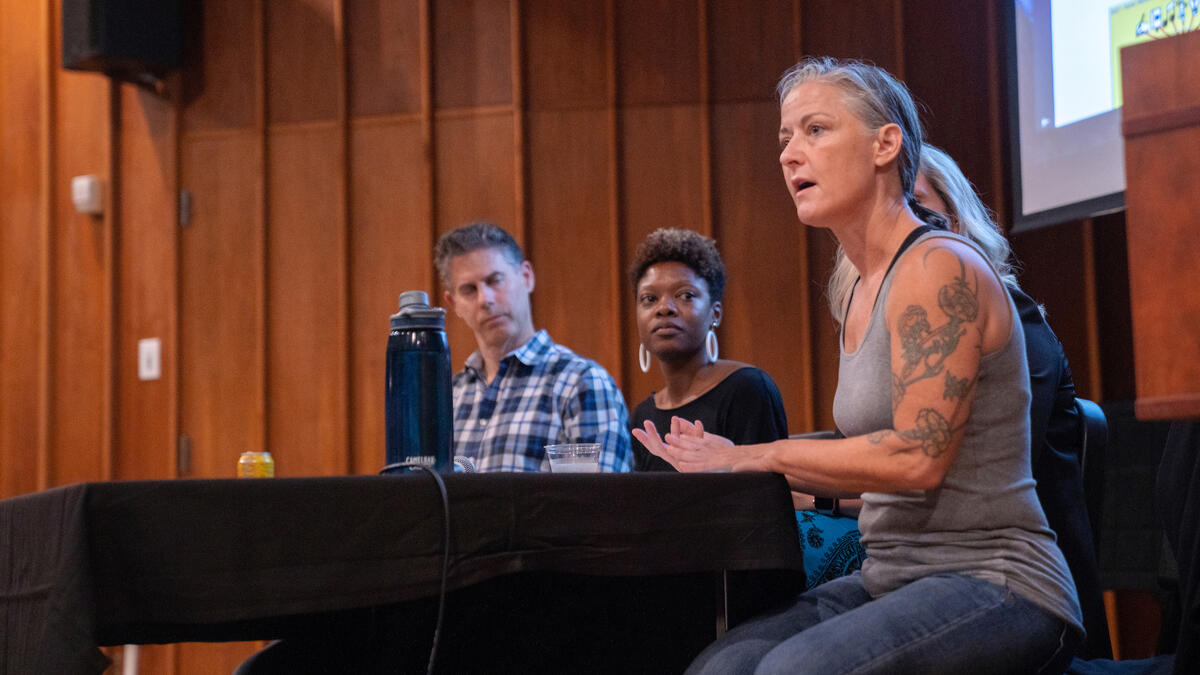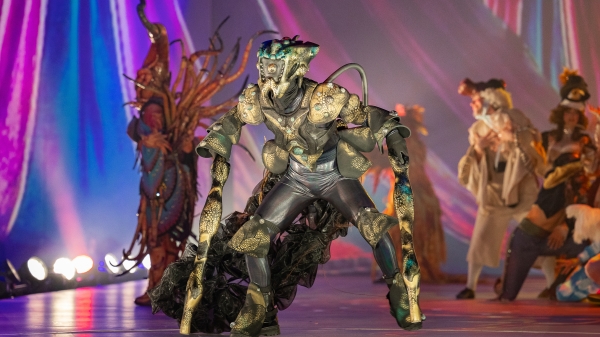Community engagement crucial for ASU arts students, who learn how to interact ethically

Working for the benefit of our community is central to the mission of Arizona State University, but it’s actually a pretty radical idea, according to a professor who teaches students how to do it.
One of ASU’s eight design aspirations is “social embeddedness,” defined as: ASU connects with communities through mutually beneficial partnerships.
In the past few decades, the concept of “community engagement” has moved into academia and arts, said Michael Rohd, an Institute Professor at the Herberger Institute for Design and the Arts.
“The common use of that idea was, ‘OK, so this museum, this theater, this dance company, this gallery or this university arts and design school will engage with people so they show up more at our space.’ We tried to expand their experience of our art,” said Rohd, co-leader of the Center for Performance and Civic Practice, a New York-based nonprofit organization.
“It was very infrequently that the term was about exchange or dialogue or justice.”
But the concept of seeing engagement as give and take — the “mutually beneficial” partnership — is new, said Rohd, who spoke at a panel discussion Monday night called “Ethics at Twilight: Ethical Community Engagement.” The event was a collaboration between the Herberger Institute for Design and the Arts and the Lincoln Center for Applied Ethics to help expose students to the kinds of ethical issues they will face in their careers.
Historically, universities viewed themselves as the holders of knowledge, which they occasionally bestowed on their surrounding communities, according to Lindsey Beagley, the director of social embeddedness for the Office of University Initiatives at ASU.
“Fifteen years ago, when ASU said ‘mutually beneficial partnerships,’ that fundamentally shifts the power dynamic,” she said.
“It implies the community has value. Not only do they benefit by interacting with the university, but the university benefits from interacting with the community.”
Research has proven that direct interaction with community members improves outcomes, she said.
“We know that with increased experiential learning opportunities, we see increased persistence to graduation,” Beagley said.
“We know that when research faculty engage with community partners, they ask better research questions. We also know they ask different research questions, which means innovation.”
All students in the Herberger Institute must engage with people outside the university through the Design and Arts Corps, which works to match community needs with faculty expertise and students’ energy.
Stephani Etheridge Woodson, a professor in the School of Film, Dance and Theatre, is director of the Design and Arts Corps. She said that training the students to interact ethically is crucial before sending them off to meet people. So over the past year, thanks to a grant from the Lincoln Center for Applied Ethics, she was able to work with people in the community to create video modules that the students watch. The videos give messages like, “Show up with a humble spirit” and “Realize that you don’t know everything.”
“We love risks in arts and design, but we manage them,” Etheridge Woodson said.
Rohd said the video training modules themselves are a game changer.
“The idea of having folks who are not academically credentialed on the platform of technology that the university owns, giving instructions on how to enter, exit or be in the community — it is radical,” he said.
Etheridge Woodson said that ASU Project Cities, in the School of Sustainability, is a good example of a mutually beneficial engagement. Municipalities identify projects they would like done, and faculty create coursework for students to study the problem and create a solution. Last spring, a landscape design class designed a dog park for the city of Apache Junction, and students in Etheridge Woodson’s community theater class created a theater experience based on the city’s history.
Engaging ethically is hard work that takes a long time, the speakers said. Wanda Dalla Costa, an architect and Institute Professor in the Herberger Institute, has been working with the Gila River Indian Community. Her “design sovereignty” project aims to give the community a voice in creating new housing designs that are culturally relevant. Earlier this month, several ASU students spent time talking to community members to discover what features they want in a house. By the time the prototype is built, likely later this year, Dalla Costa will have spent more than three years working with the Gila River people.
But nothing can replace that on-the-ground listening, according to Erika Moore, an alumna of the Herberger Institute who helps run the Projecting All Voices initiative. In her previous job, she worked with people who were experiencing homelessness, walking along the Rio Salado riverbed and talking with them.
“You start by listening. And you listen and you listen and you listen,” she said.
“There are a lot of layers to every story.”
Top photo: Stephani Etheridge Woodson (right), a professor in ASU's School of Film, Dance and Theatre, speaks about the importance of genuine community engagement at the “Ethics at Twilight: Ethical Community Engagement” panel on Sept. 24. Also pictured is Michael Rohd, Institute Professor at the Herberger Institute for Design and the Arts (left) and Erika Moore, an alumna of the Herberger Institute who helps run the Projecting All Voices initiative. Ethics at Twilight is an ongoing lecture event sponsored by the Herberger Institute for Design and the Arts and the Lincoln Center for Applied Ethics. Photo by Marcus Chormicle/ASU Now
More Arts, humanities and education

ASU alumna makes her way back to the ASU Gammage stage for '¡azúcar!'
As the Los Angeles-based CONTRA-TIEMPO dance group prepares for its upcoming production “¡azúcar!” at ASU Gammage, for one member of the dance group it is also a nostalgic return to her home.Born in…

ASU FIDM professor wins international award for fantastical, sustainable creation
The horror of an ailing Earth inspired an Arizona State University fashion professor to create a fantastical garment out of sustainable, re-used and found materials that won a prestigious…

ASU workshop trains educators, professionals from marginalized communities in disaster science
As devastating as hurricanes can be to anyone caught in their paths, they strike marginalized communities even harder.To address this issue, a fund named for a former Arizona State University…